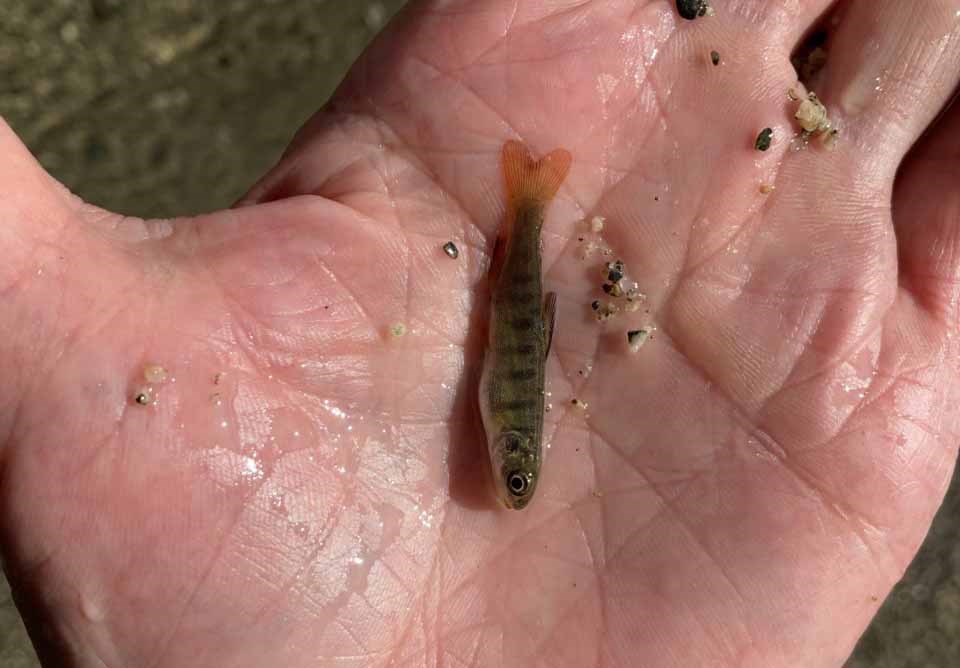Efforts to restart a lost fishery in the Coquitlam River may be paying off.
Hundreds of sockeye smolts and dozens of coho fry have been spotted in the river and its tributaries in recent days, according to local biologists.
Last week, a few dozen coho fry were found in Cedar Creek above the lake while crews have counted 684 juvenile sockeye smolts in a trap just below the Coquitlam Lake dam.
“This is wonderful news,” said Craig Orr, environmental advisor for the Kwikwetlem First Nation.
He said releasing coho salmon in to the creek above the lake last fall is part of an effort to rebuild a species lost 115 years ago when the dam was built.
“The goal wasn’t production per se, but more about a small but symbolic step in cultural and biodiversity restoration,” Orr stated in an email to Tri-City News.
SALMON CAUGHT IN THE COQUITLAM RIVER
The coho fry are from 62 salmon that were captured in the Coquitlam River and released in the creek above the lake, under the supervision of the Kwikwetlem Salmon Restoration Program.
The fish were caught by angling and seine nets with the support of the Port Coquitlam and District Hunting and Fishing Club, with help from the federal Fisheries and Oceans salmonid enhancement program.
Wild coho fry found today in Cedar Creek above Coquitlam dam, first successful spawning and incubation in 115 years! From 62 adults released last fall. #wildfishmatter #wildsalmon @Kwikwetlem pic.twitter.com/UWpY0Ocp3S
— Craig Orr (@CraigOrr_) May 19, 2021
The coho were then taken to Cedar Creek, a tributary flowing into the Coquitlam lake, where they successfully spawned. However, it will be a few years before the fish are large enough to make their way out of the lake, through a fish valve in the dam, where they will migrate down the river out to the Pacific Ocean.
If the Cedar Creek-spawned coho do make it back from their ocean journey, they would need to be caught and trucked back to the creek above the dam to continue their life cycle. A fish ladder to allow the salmon to scale the dam would be a more natural solution, but it’s not available and Orr said the catch-and-truck method would work even if hundreds of coho return.
As for the lake-bound sockeye, which were spawned naturally in the creek, they appear to be determined to make their way out and down the river to continue their natural cycle regardless of human impediments.
Hundreds of the silvery smolts were found recently in traps outside the dam, possibly encouraged in their journey down the Coquitlam River by higher dam flows and the temporary closure of the Buntzen diversion tunnel.
HELPING SALMON TO BEAT THE ODDS OF OCEAN SURVIVAL
Human efforts to increase the number of sockeye by releasing 5,000 smolts into the river in 2017 weren’t as successful, however: only a couple of sockeye returned and all were female.
“It’s very poor ocean survival, right now,” Orr commented.
A sockeye hatchery will be built soon that should help the species survive after near extinction owing to the Coquitlam dam.
However, it’s not quite enough. Orr said changes also need to be made to the dam to allow fish to escape more easily, but those fixes are costly and still being explored.
In the meantime, Orr is taking some comfort in the successful Cedar Creek coho spawning as well as the emergence of a large number sockeye smolts from the Coquitlam lake.
“It’s step in the right direction to healing the watershed.”


.png;w=120;h=80;mode=crop)
